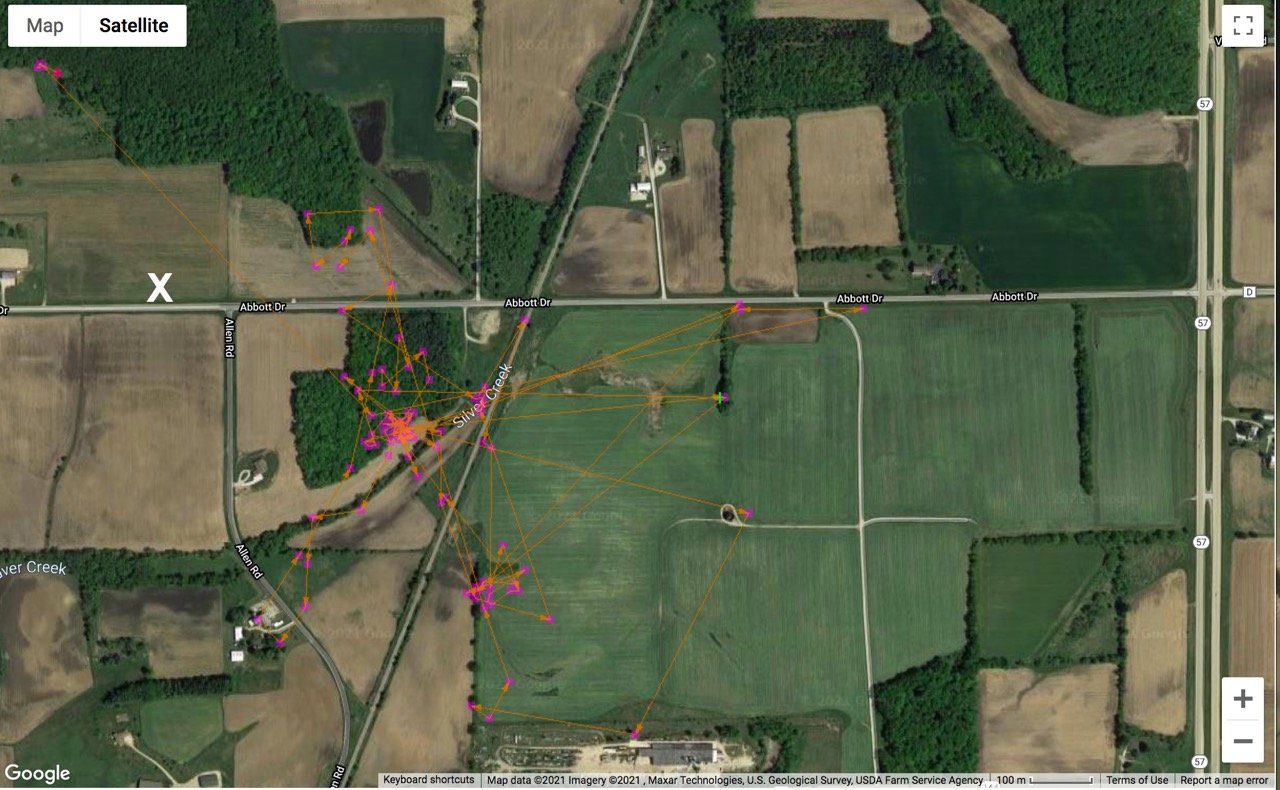Since our next Friday Feathered Feature won’t be until January 7 (due to the holidays), we decided to provide an update on raptors being tracked with solar powered, cell phone transmitters that Madison Audubon members have been involved with.
Included here are past features and information from the project coordinators. With new technology, it is interesting to be able to track raptor movements and learn more about raptor ecology. We plan on providing raptor updates this winter. We hope you enjoy learning about raptor movements and their ecology as much as we do.
The beautiful snowy owl caught near Goose Pond Sanctuary on Jan. 28, 2020. She was outfitted with a transmitter for research purposes and release back into the wild. Photo by Monica Hall
Snowy Owls—Columbia and Fond du Lac
The last word from Columbia, a Snowy Owl we outfitted with a GPS unit in January 2020, was in early April of 2021. Last fall she called in on November 12 from Manitoba and this year she called in on Thanksgiving Day from Manitoba. Columbia’s solar battery power has been low due to lack of sunlight. Now, we look forward to having her download data from April 28 to the present.
This winter looks like another good year for snowy owls in Wisconsin according to a recent DNR snowy owl report.
Scott Weidensaul, co-founder of Project SNOWstorm, is holding a webinar called "A World on the Wing: The Global Odyssey of Migratory Birds." This Madison Audubon/Aldo Leopold Audubon Society event is on January 19 from 7:00 p.m. to 8:00 p.m. It is open to the public, and you can register here.
Fond du Lac the Snowy Owl. Photo by Richard Armstrong
We helped coordinate the trapping of Fond du Lac on February 23, 2020. Her last location in early April 2020 was from northeast Wisconsin. We were disappointed that Fond du Lac did not call in last winter. However she called in on November 21, 2021 from the east side of James Bay and downloaded 23,000 data locations!
In 2020 she nested in the Ungava Peninsula on the east side of Hudson and then moved north for the winter near polymyas (small areas of open water that sometimes have large concentrations of sea ducks such as eiders) in the sea off the coast of Baffin Island. She nested this summer on Baffin Island before heading south. As of December 9 she was on the north shore of Lake Superior heading west. When she went north in April of 2020 she went around the east side of Lake Superior.
Otto the Red-tailed Hawk. Photo by Sue Kaehler
Red-tailed Hawk—Madison and Otto
Suzanne Kaehler with Cedar Grove Ornithological Station asked if Madison Audubon would like to sponsor a transmitter for a North American Study of Red-tailed Hawks. Madison Audubon, Jim and Suzanne Otto, and Suzanne Kaehler (two transmitters) provided funding for transmitters.
Otto appears to be a resident and is staying in the local area near Random Lake where he was caught. Madison was caught at the field station on October 31 and by November 13 settled in and remains in a small area near Mount Washington, Kentucky that is 400 miles south southeast of the field station.
Paul Smith’s Redtail Article (December 4, 2021) You may want to consider a digital subscription to the Journal Sentinel so you don’t miss Paul’s articles on Thursdays and Sundays.
A map showing Otto’s movements as of October 30, 2021.
A map showing Madison’s movements.
No time like the present to band this Red-shouldered Hawk! Photo by Arlene Koziol
Red-shouldered Hawk - Arlene
Arlene, named after Arlene Kozil, a Madison Audubon’s volunteer and conservation photographer, was fitted with a transmitter in June. She is still in the local area near where she nested south of Portage. She moved 1.5 miles to the west and then back to the nesting area. Most of the Jacob brothers Red-shoulders move south for the winter, however they have had birds stay in Wisconsin for the winter. They reported that a red-shouldered that nests in the Stevens Point area is in Baton Rouge, Louisiana for the second winter.
Arlene Koziol, Madison Audubon volunteer, is holding the youngster of the Red-shouldered Hawk we called Arlene! Photo by Mark Martin
Written by Mark Martin and Susan Foote-Martin, Goose Pond Sanctuary resident managers, and Graham Steinhauer, land steward












